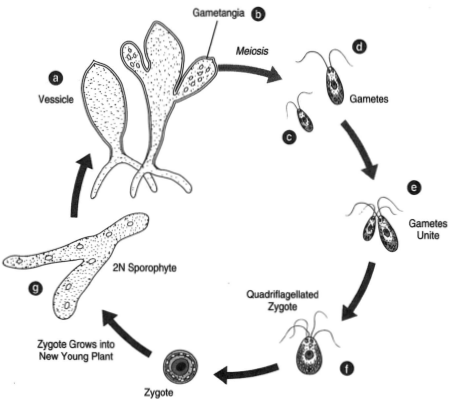The Siphonous Line
The last of the postulated lies of evolution among the green algae is the Siphonous line. Members of this line may have unbranched or branched filaments. Their most striking feature, however, is that they are multinucleated. These forms seem to have lost the capacity to make cross walls following the divisions of the nucleus, which results in the multinucleated, or coenocytic, condition. The coenocytic condition occurs both in algae and in fungi but is not found in higher green plants.Codium is an example of this line. The thallus bears gametangia of two sorts: those producing larger gametes and those producing smaller gametes. The form is anisogamous. When the gametangia break open, biflagellated gametes emerge and come together in pairs, each of a larger gamete and a smaller gamete. Each pair of gametes forms a four-flagellated zygote that readily begins growth to form a new plant. The divisions are mitotic. The plant produced is diploid, and the only haploid cells in the life cycle are the gametes (meiosis occurring in gametogenesis). There is clearly no alternation of generations.
 |
| Flgure 13-10 Codium (a) a vesicle bearing gametangia, (b); (c) and (d) gametes that differ in size. (e) The union of gametes produces a quadriflagellated zygote, (f), that grows into a new young plant, (g). Meiosis occurs in the production of gametes. |




